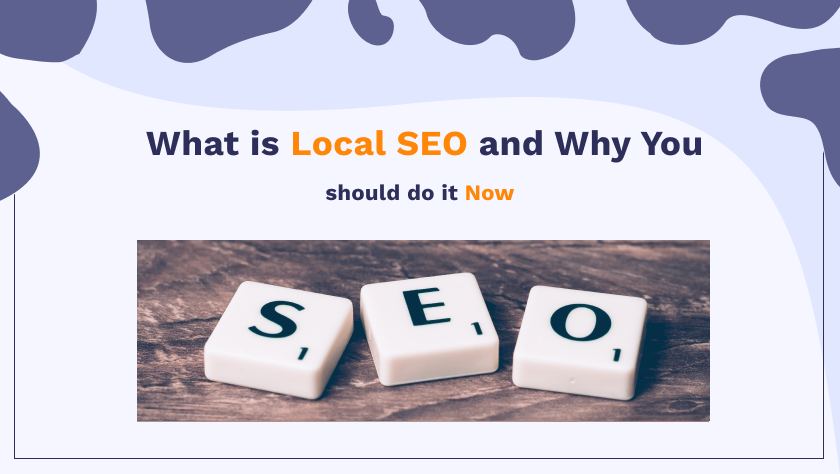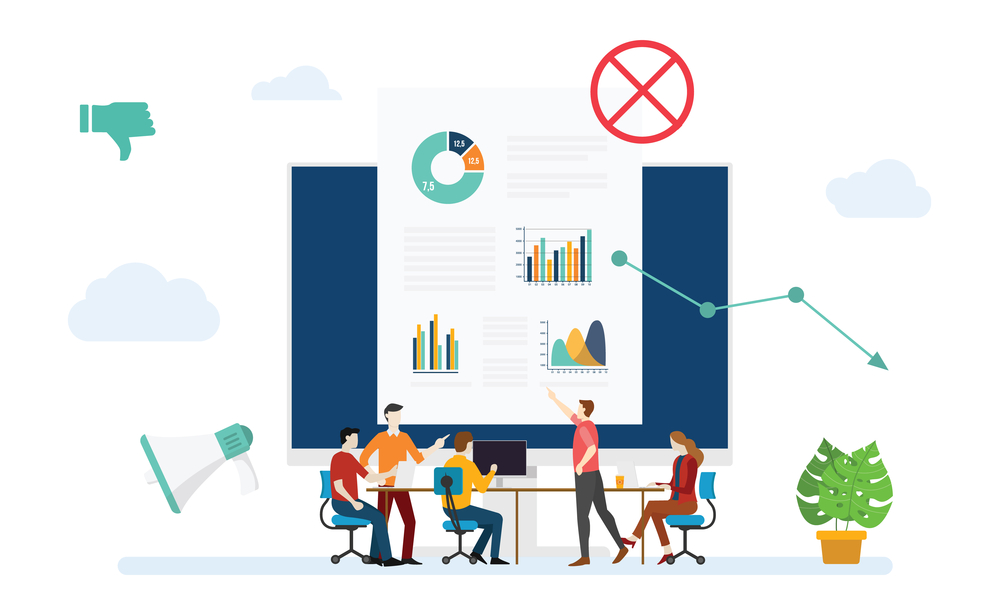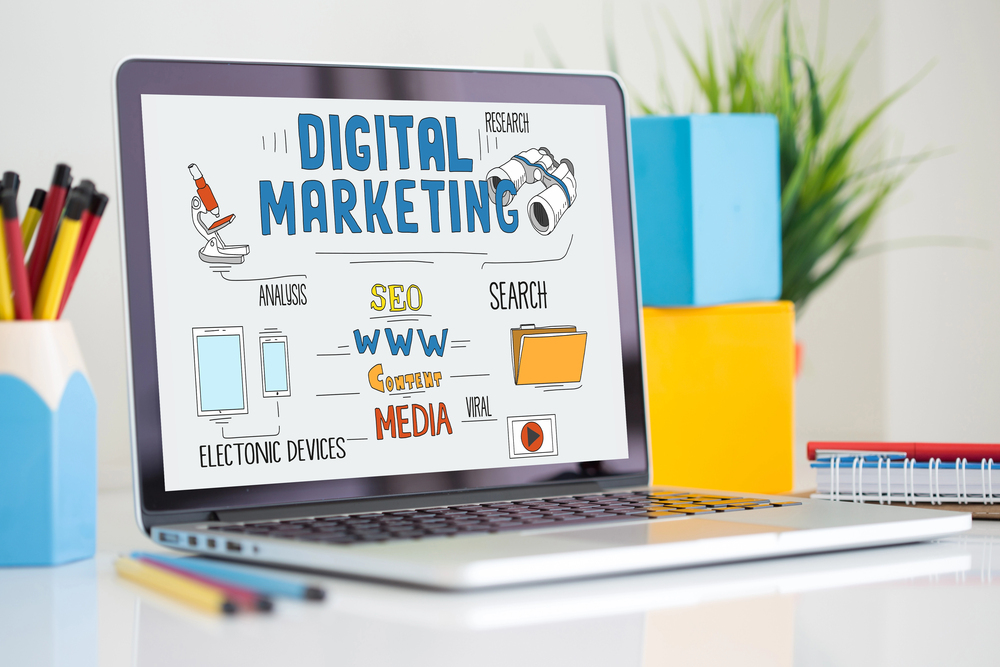About 46% of Google searches are local in nature. Businesses are turning to Local SEO to optimize their ranking in SERPs and local packs. Will yours show up when customers are searching online? Will they pick you?
If you want to find a restaurant, store, or repair center, you search for it online, right? Everybody’s first reaction is to Google a business near them. If you’re a business owner, you would want your store to be the first list customers would see and call. So, how will you be able to dominate Google listings?
Local SEO is a digital marketing strategy to influence SERP rankings with local signals on Google’s local search landscape. While it still falls under the general SEO guidelines, Local SEO has a specific and targeted intent to sway local searches.
What is Local SEO?
Local SEO is the process of optimizing content and online presence to influence ranking in local searches. When a user searches for businesses or keywords relevant to their current location, website owners hope to be visible and on the top results for higher chances of sales transactions.
Examples of local searches made by users are:
- [business/industry] near me
- [business/industry] in [location]
If you’re running a local business, with customers visiting your store frequently, it’s important to optimize your website on SERPs. Likewise, your social media accounts should include local elements to be discovered by prospects. Local SEO covers a lot of aspects including:
- Google My Business
- Local Directory Sites
- Optimizing website for local searches
- Local inbound links and citations
- Local reviews
- Social media optimization
- SEO ranking signals
If you’re servicing a specific region or city, it’ll be easier to direct prospects to local searches if you optimize your business correctly. But, if you’re open to servicing other cities and regions, that you’re not physically located, you need to drive local SEO through listings and content.
We’ll discuss Local SEO techniques to get you on the first page and rank high enough on pack results.
Statistics on Local SEO
Local SEO drives more quality leads than asking for random visitors to your store. Don’t believe us? Check out these facts and statistics on Local SEO.
Search facts
According to Moz, Google makes about 5.6 billion searches in a day. About 46% of those searches are local. Can you imagine that around 2,575,000,000 searches are about community businesses? The question is: Is your store included in Google SERPs when customers are searching for your business?
Store choice
Moreover, 92% of searchers choose businesses found on the top of Google Pack or on the first page of organic SERPs. Over 70% of users visit a store after finding relevant results to their searches.
Mobile responsiveness searches
According to Google’s 2019 research entitled, Think with Google, 76% of users search online with their mobile phones for something they want to buy near them. About 28% of these searches recorded results to purchase. What’s more, over 50% of mobile users search for business hours and store location.
Keyword searches
Queries of ‘where to buy [product] near me’ grew to 200% by 2019. The keyword ‘[store] open near me’ also grew to 250% by 2019. Lastly, searches for ‘[product] on sale near me] is picking up at 250% by the end of 2019.
Local social media
According to Safari Digital, local social media ranks second as the most widely used local SEO search by users. In a study by V12Data, over 90% of social media users reach out to their local brand. Besides, 27% of users discover new products within their community through social media.
Local business reviews
Moz mentioned that 67% of searchers changed their perception of a brand after reading reviews. Statista nodded to this study as the survey giant said that 93.4% of searchers read customer reviews before buying from a new or unfamiliar store. And, did you know that local business reviews make up 15% of SEO ranking signals?
What is Google Local Pack vs. Organic Results
Search engines have evolved through the years as Google tries to show results relevant to the users’ searches. Enter, Google’s front-page, first-results Local Pack. It shows the top three stores in Google My Business (GMB) and Maps while giving the searcher the selection to see more options.
Beneath this pack are your organic search results that lead to a directory site (Yelp, TripAdvisor, etc.), your website, or social accounts (Facebook, LinkedIn, or Instagram).
What’s the difference?
Google’s Local Pack and Organic Results work differently – but, are every marketer’s dream goal. Google Pack is based on GMB listings and will show you top results from stores within your area. All info and content of the Local Pack are boxed and separated from the rest.
Meanwhile, Organic Results stem out of websites optimized for SEO. Google signals factors such as content, keywords, and inbound links for a business to show on SERP. These are your typical listed websites ranked from page to page.
Google Local Pack
The Google Local Pack is a boxed section on the SERPs usually located at the top of the page and above the organic results. It shows local businesses based on your keywords and consists of:
- Map and directions of the businesses
- Name, Address, and Phone Number of the business
- Reviews of the business
- Rating
- Operational hours
Additionally, you can click on the button below to see all businesses within your area. However, users prefer clicking or choosing the top three in the Local Pack. Will you be there?
The Local Pack is coveted by marketers because: (1) it’s located at the top; (2) it has detailed info; (3) it has visuals such as maps, logos, and photos of the business; (4) it has reviews and ratings from real customers, and; (5) it contains the name, address, phone number, operational hours, and website.
It’s not easy ranking in the local pack as there are only three businesses that get displayed on the first page results. Below is a visual representation, so you know what I’m referring to with the local pack.
How to rank top three on Google Local Pack
Your Google Local Pack results are connected to how well you perform on your GMB. Have you claimed your Google My Business listing yet? Well, you should. That’s the first step in improving your business’ SEO. If you want to know more about optimizing your GMB, here’s how:
A complete, accurate description of your company
Claim a listing with your business on it. Choose the correct category for your company and add as much information about your business. Remember, you can add your phone number, opening times, and services provided.
Add photos
Adding photos is a great way to boost the credibility of your business. How can visitors trust you if they can’t see your products, team, or venue? Optimize the images’ names with appropriate keywords and alt name txt to it, too.
Write short posts
Google My Business adds a short post where businesses can write down everything about their companies. Regular postings about your business will let people see that you’re active enough to care about their concerns. Remember to add relevant keywords to the posts too!
Welcome reviews
Let customers leave reviews about your business. Even if it’s a bad one, always respond to them that you’re going to do better next time. Google loves a business with good reviews. Don’t you know why? They rank higher.
Provide FAQ
Provide questions for your business so that customers will have an idea of how your company runs. You can even answer your visitors’ questions by providing details about the business. Fast replies are often seen as a good sign according to the customers.
Organic results ranking
Local search is an essential marketing strategy critical to a business’s success. This is best for stores or companies that focus on products and services at a local level. Organic results ranking refers to the strategy where business websites and profiles influence their ranking SERPs through SEO methods such as creating and optimizing content, link building, and social media sharing.
Advantages of SEO
If you’re an online marketer, you’ve probably heard more than once or twice to use SEO for your marketing strategy. However, if you’re new to the digital space, SEO takes a long time to fully recognize your website’s potential. So, is it still worth it if it’s the long wait?
- People are searching for businesses like yours
- Generates quality traffic and leads
- More conversion and sales
- Low-cost marketing strategy option
- 24/7 and long-term promotion
- Creates trust and credibility
- Creates brand awareness
- Receives more clicks and actions than paid ads
- Local SEO improves in-store sales
SEO is myriad of factors comprising of on-page, off-page, or technical strategies to improve rankings. By taking account of these approaches, you get to improve not only your rankings on SERPs, but as well as the quality of your content, customer engagement, and mobile responsiveness. In other words, it has a reciprocal relationship to your website activities.
How to rank local in search engines
You always search online for a good product to use, a restaurant to eat, or a how-to-do article of a certain hobby. Now, which website do you usually click? It’s always on the first pages of Google SERPs, right? And everybody else chooses the first posts on the results pages. It would be great if your website is one of those websites on the first page of search engines.
Organize and maintain proper URLs
Keep your URLs static and push changes if you need to do so. Constant dynamic changes on your URLs will have search engines confused as to what content they should index on SERPs.
Use keywords sparingly– including long-tail and latent semantic indexing
Include them on your title tags, header tags, and body content. However, search engines are becoming smarter these days and prefer quality content over keyword stuffing.
Optimize titles and meta descriptions
Title tags are used by search engines to highlight webpages on SERPs. This is the first piece of information your website tells Google what it’s all about.
Keep header tags and content format
Include headers tags to show the content’s primary titles and headlines – it’s necessary for Google to assess your content’s structure and framework.
Optimize images and multimedia content
Optimizing images for web or mobile uses comprises compressing and adding alt text for site speed and discoverability.
Build quality backlinks
Backlinks are the central activity of every off-site SEO bustle. They are often used as indicators of quality content.
Do guest blogging
Guest blogging is a perfect way to position yourself as an authority figure in the industry. What’s more, you get more exposure and backlinks on your site.
Tap into influencer marketing
You can tap individuals with influential status to endorse your products. They’re bloggers, Instagrammers, YouTubers, or local celebrities in your hometown.
Secure site with SSL certification and encryption
An SSL encryption is a way to secure your customers’ information on your site. Google announced that SSL encryption is an SEO ranking factor in SERPs.
Improve site speed
People leave a slow loading site page and abandon their shopping carts to a faster website
Mobile responsiveness
Optimize your website for mobile to improve user experience. Most web traffic comes from people who use their phones for online searching. You can inspect your web elements using Google to know if your site is mobile-friendly, what’s working, and what’s broken.
Why you need Local SEO
Local SEO plays a huge role in getting you ranked higher in geographically-related searches. Factors such as distance, relevance, and activity, play a huge role when customers are trying to search for you. Here’s what it can help you with:
Increase local brand visibility. About 97% of online customers search for a brand near them. Local SEO helps your business stand from among competitors by increasing your page ranks.
Improves web traffic, leads, and local sales. Did you know that 80% of repeat customers are responsible for high returns on investments for businesses? And, most of these customers come from your local community!
Easily targets local or geographically-centered campaigns. Most businesses think that targeting all demographics is a wise choice to bolster income. However, you could end up spending more than earning more because you did not target your campaigns geographically and demographically-focused. When running a campaign, you need to target a specific audience that appreciates more of your products or services.




